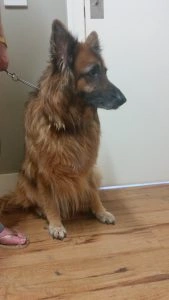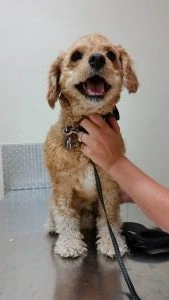Cassie & Charlie – anal gland adenocarcinoma
.webp)
Anal Gland Adenocarcinoma, or a cancer of the anal gland, is rarely diagnosed early because it tends to grow inward into the pelvic area rather than out through the skin – which makes it very difficult to spot. By the time a diagnosis is made, the cancer has often spread into the sub-lumbar lymph nodes, which lay beneath the back muscles in the abdomen.
.webp)
As the tumour cells cause these lymph nodes to enlarge, they often begin to apply pressure to the organs in the pelvic canal. This means the first signs of the cancer is often straining due to difficulty passing stools. We treated two brave patients, Cassie and Charlie, for anal gland adenocarcinoma – read about their brave journey below.

Cassie, a 10 year old German Shepherd, came in to see us after her owners noticed her straining. The condition was so bad that both her bladder and colon were obstructed by multiple, very enlarged, sub-lumbar lymph nodes. Six masses (measuring 6-8cm by 4-6cm in size) were removed, which you can see in the image above. This surgery, along with the removal of the primary removal of the anal gland, only cost Cassie’s owners $1,450 – a fraction of the cost of a referral centre

Charlie, a 9 year old Cavoodle, also came to our hospital after he began straining to pass stools. He removed his sub-lumbar lymph nodes and the primary anal gland tumour for only $1,280. He also had five cycles of doxorubicin chemotherapy, which cost his owners $230 for each session. Five months after he first came to our hospital, Charlie still is showing no signs of recurrence of the cancer – in neither his sub-lumbar area nor in the anal region. Interestingly, the chemotherapy caused Charlies coat colour to return to his puppy brown colour, even though he had been white for most of his adult life!